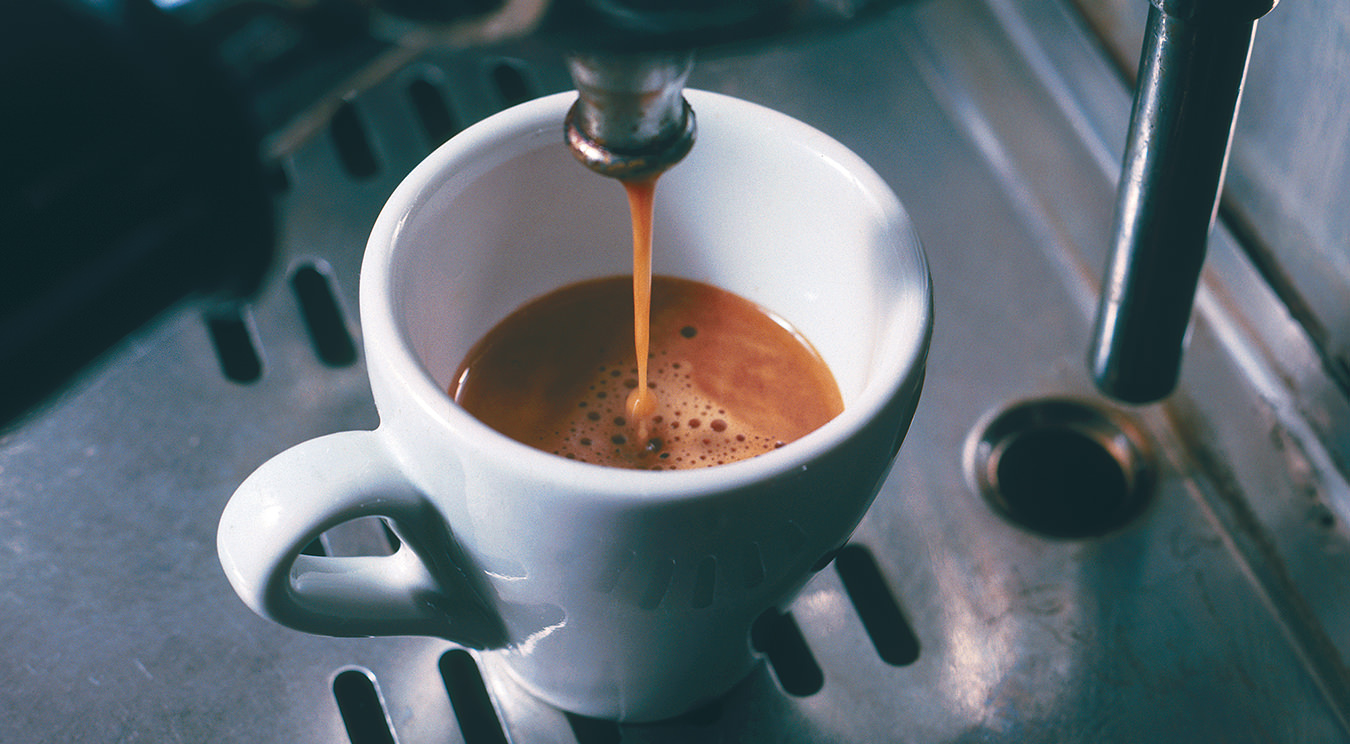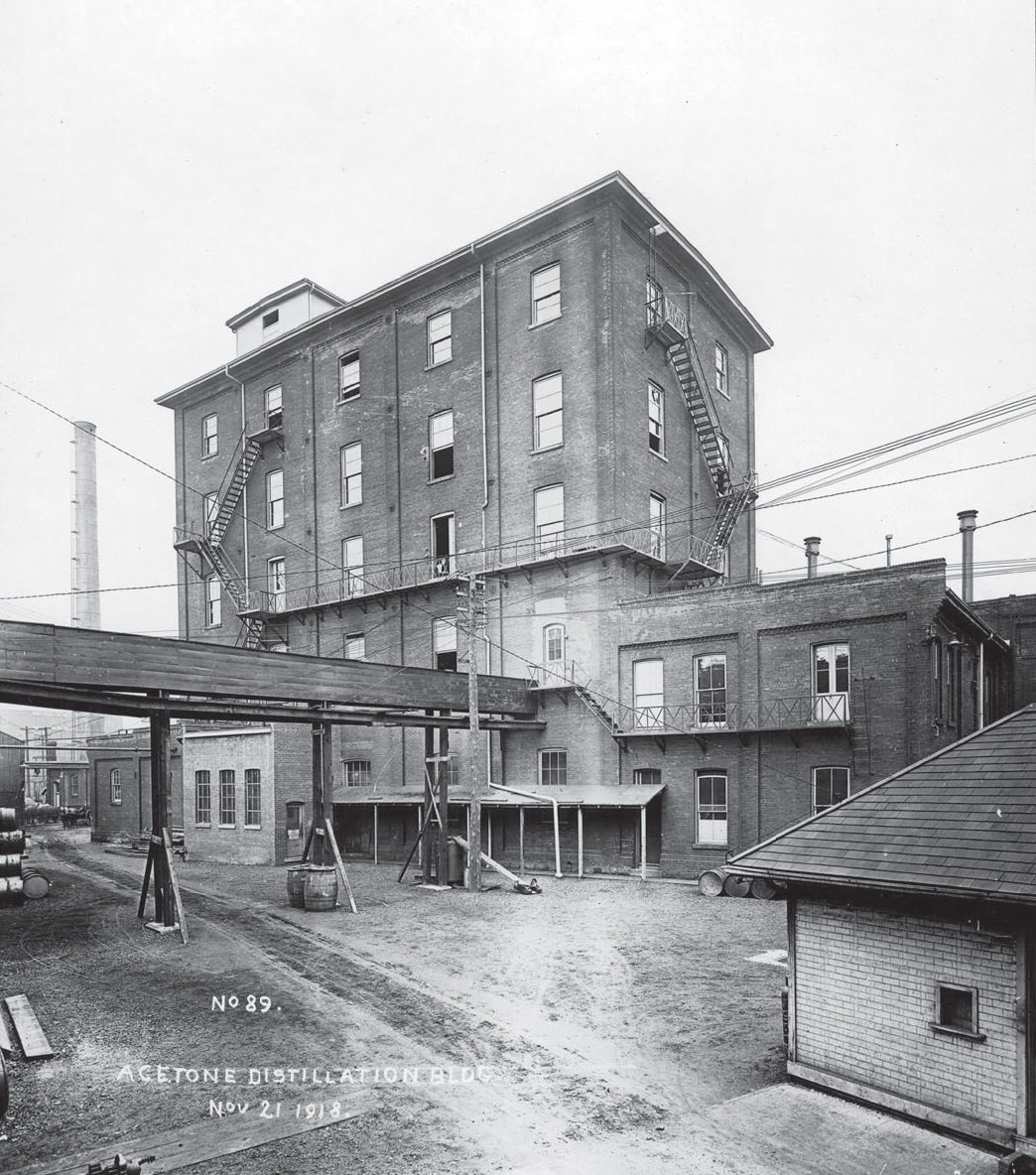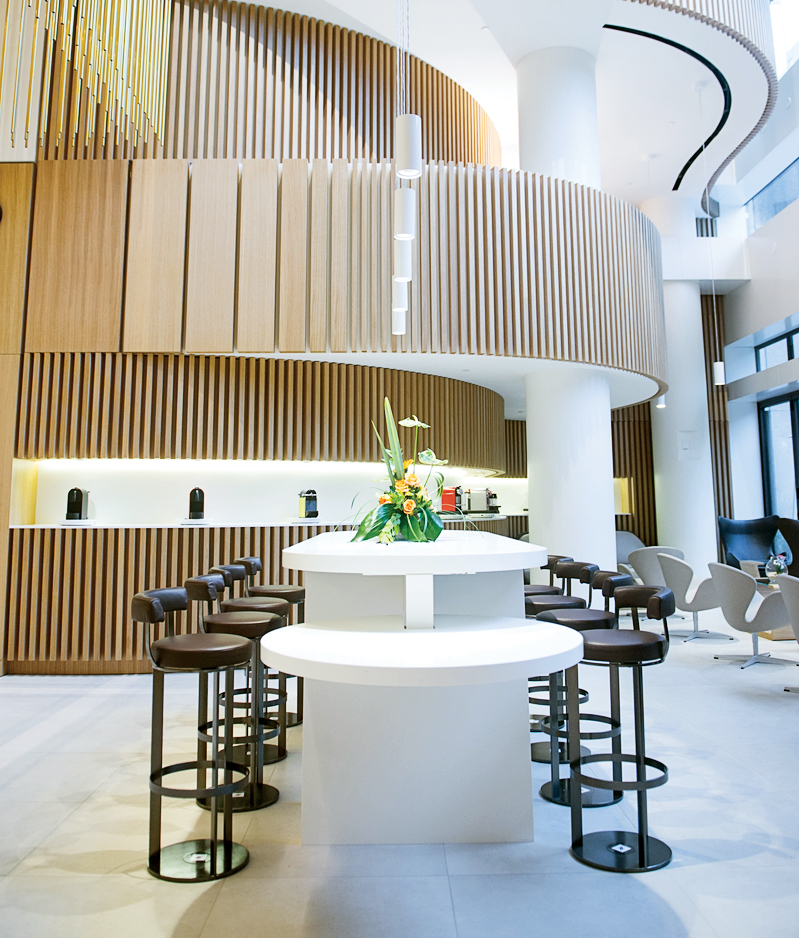L’Arte dell’Espresso
Class coffee.

There is a story, not apochryphal, of a vendor who insists on making his product, on offer to the public every morning save Sunday, in an immaculately clean machine, with the finest offerings of the cof fea arabica plant roasted and ground just so, and made with special water, the cleanest, softest available. This all seems fine until you learn that the water is trucked daily from a spring three hours’ drive north of the little shop on a busy corner of Verona. But this is the only water that will do, and this story, not apochryphal, goes a long way to explaining how vital it is to the spirit of the traditional barista that what makes its way into the cup is the expressive, concise, best two black ounces of coffee perfection known as espresso.
It is known by this name because of the way it is made, ideally in a machine capable of providing 1.3 atmospheres of pressure with which heated water is charged by a high-performance pump through perfectly ground coffee beans into a tiny cup. “Perfectly ground” means different things to different machines, but to a high-performance espresso machine it means granary-dust fine grind, possible only with two sharply-tooled rotors, in contrast to the perfectly good “helicopter” grinders that can deliver drip grind, but nothing beyond. The liquid is expressed through the grounds, a two-ounce shot taking less than twenty but more than eighteen seconds to make its way from high-pressure water to demi-tasse perfection. The result is ounce for ounce less concentrated in caffeine than other methods, as water is the great caffeine extractor, and proper espresso spends very little time in water.
The espresso blend, as few as three but as many as seven types of beans and roasts in myriad possible combinations, requires knowledge, foresight, acute taste, and highly developed judgement on the blender’s part. Ideally, the espresso blend is not actually as dark as French or Italian roasts, but is more suited to the keen test of the machine. Faults in beans and therefore in blends are more readily apparent here than elsewhere; a bitter streak in the mid-range of the palate, too pronounced on the attack or too short on the finish, and you know you are not in the hands of greatness.
Taken in a contemplative moment, resource encyclopedia to hand, you can discover the method of extracting the drink in your cup from the large plants on plantations throughout certain temperate parts of the world (Brazil, North Africa, Guatemala, Hawaii, et al). None of this will adequately explain, let alone define, how it is that coffee came to be. Like fermented grapes, distilled potatoes, gelato, and chocolate, coffee is not obvious. It begins as a plant which flowers and produces a fruit bearing a pod with two beans. The pod must be cured, dried, and then separated from the beans, which must then be roasted before anything approaching a cure to the caffeine-deprivation headache is rendered. The roasted product must be ground into particles and somehow have water moved through it to extract the flavour. So there are several leaps in inductive logic, or a massive display of intuitive know-how, the likes of which pretty much prove God’s existence, to facilitate the fact of coffee’s existence at all.
Vince Gentile, resident genius behind Vancouver’s Casa del Caffe since 1981, graduated from a 14-kilo roaster to a 140 only four years ago, and he still cannot keep up with demand. The reason: only he and his apprentice oversee the roasting in a hands- and eyes-on way. Vince went to Italy to apprentice, first in Sicily, then in the north. “They expected a lot, explained very little. But they answered most of my questions. I learned everything I know about coffee there, but most important, I learned to trust my own palate.” And what a sophisticated palate it is. Vince cups coffee consistently, testing various roasts, blends, and sources, nosing, swilling, and spitting the way oenophiles do. He is a great believer in the blind taste test: “When anyone asks me how I know my coffee is good, I just say, come by the shop, and do a blind test. You can decide for yourself.” Given the degree of expertise among the hoteliers and restaurateurs who try the test, Vince’s failure rate is pretty much nil.
The masters taught Vince one lesson important above all simply by not divulging all their secrets. “In fact, if I hadn’t told them in advance, and agreed by contract, that I was leaving Italy and returning to Canada after my apprenticeship, they wouldn’t have shown me even as much as they did.” The vital lesson is to make the final sum yourself: know what you like, and trust your instincts.
The espresso blend requires knowledge, foresight, acute taste, and highly developed judgement on the blender’s part.
On almost any street corner in urban North America and soon in many European cities, you will find the phenomenon named for a character in the quintessential American epic, Moby-Dick.
Starbucks moved to bridge the great gap between what was consumed at the local street barista’s stand in Naples and what was being served in Snoqualmie as a “cuppa Joe,” no insult intended to Agent Cooper.
The Starbucks people saw a path. The point is really to emphasize, maybe even over-emphasize, the coffeeness of coffee. It’s still a very even roast, and it imparts a certain fulfillment of the perception of what coffee should be. In Europe, there is a different prototype. Francesco Illy founded his company in Trieste, in 1933. They serve some of the finest of the 25 million espressos consumed worldwide everyday. For many what the Vatican is to Catholics, Illy is to espresso lovers. It is a combination of art and science.
The green beans, sourced by Illy and by such people as Vince, are always top quality. No flaws, no bugs, no off-grades. Only the finest A-grade arabica. Shipments are rigorously checked, then roasted according to a proven formula: certain beans require more roasting, some less, at varying degrees and lengths of time. Grant these artisans their privilege. Simply watch the green beans grow golden, then brown, then black as they turn in the roaster, which is heated indirectly. Then, as the allotted time arrives, they are expunged into a rotating cooler—a shallow pan, really, and no water-cooling allowed—with a rotating arm that both exposes them to cooling air and siphons them into a vacuum chute, where they are transported into shipping units. Air is the great enemy of coffee, both in bean form and after brewing, so air is a part of this process for only a very few minutes.
Vince watches closely, and, at the moment when the beans are barely cool enough to handle, he scoops a handful, takes them to the grinder, makes two espressos. This is the extreme, the ultimate; the coffee is intense, aromatic, suggestive of both earth and sky. It is difficult to allow it the few seconds it needs to cool to the point where it will not scorch the palate. Then, take it down. As with fine wine, take in air, allow the liquid to play on the palate, then swallow. Smooth, deep, multi-faceted. An incredibly long finish.
On the cover of the nearly 100-page booklet included in Bob Dylan’s 3-CD version of his Bootleg tapes, including songs from Great White Mother recorded on two-track tape in basements of friends and lovers, there is no portrait of the artist, no shot of the band in session. Rather, there is a booklet opened to pages of hand-rendered script, a pen, some cigarette ash, accoutrements all to his muse. But the foreshortened object in the image is an emptied cup of espresso, spoon licked clean, and you can almost hear him writing “one more cup of coffee before I go/to the valley below.”
Take it as you will, but try a cup of espresso one day truly expressed for your delectation and contemplation by an artist behind the bar; a coffee by any other name will not taste so sweet.



